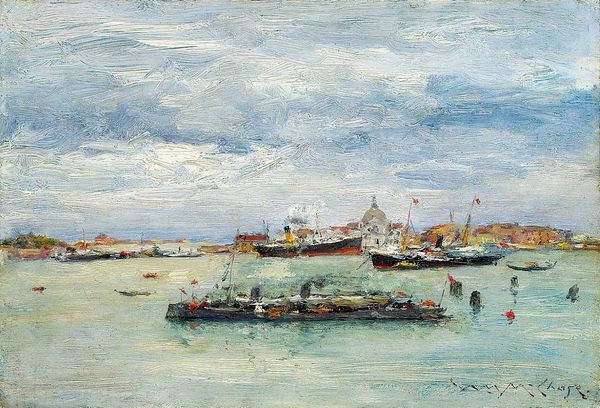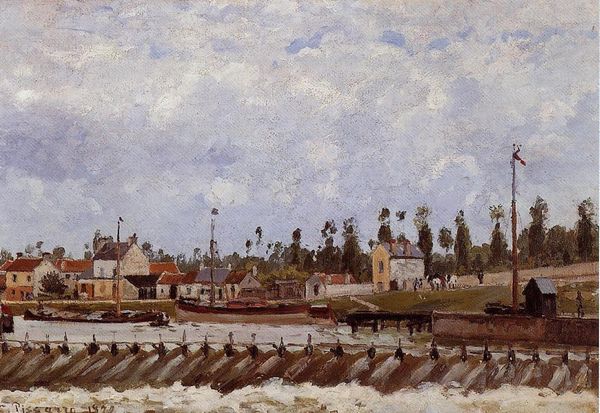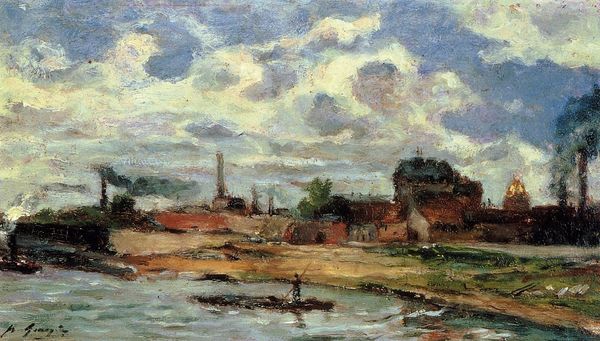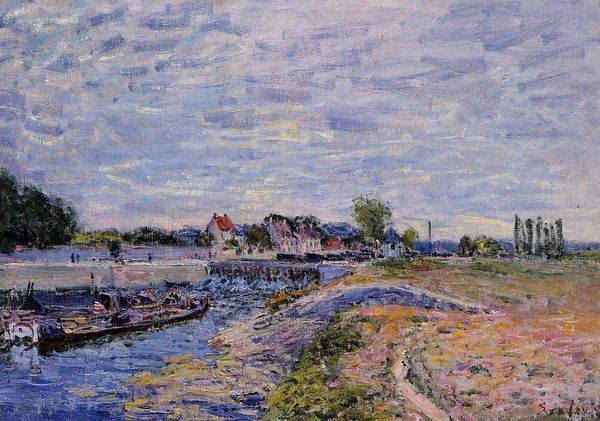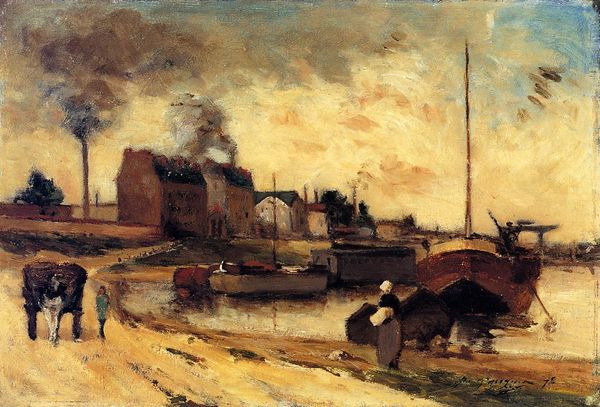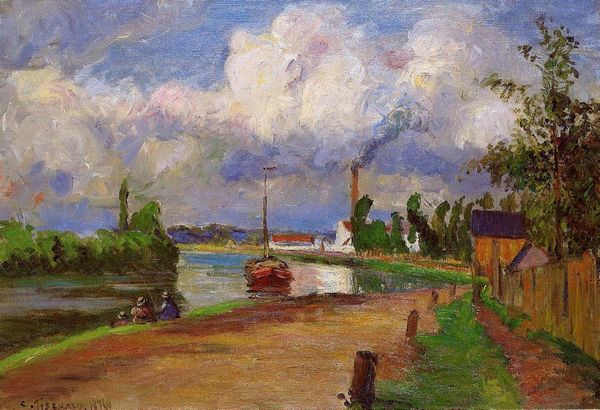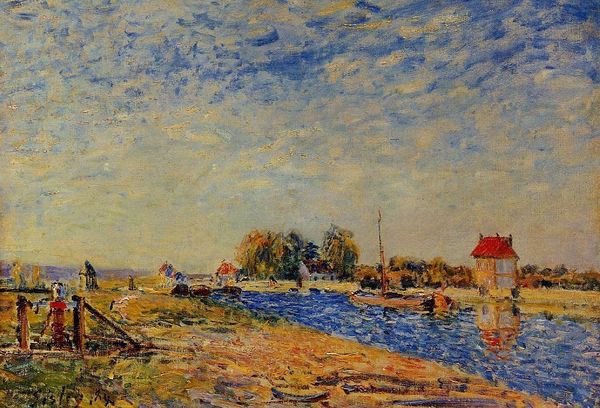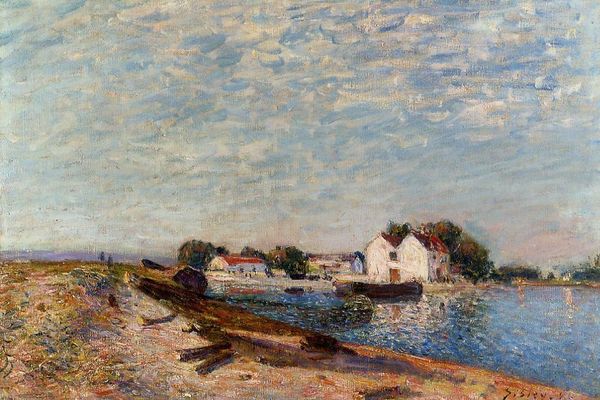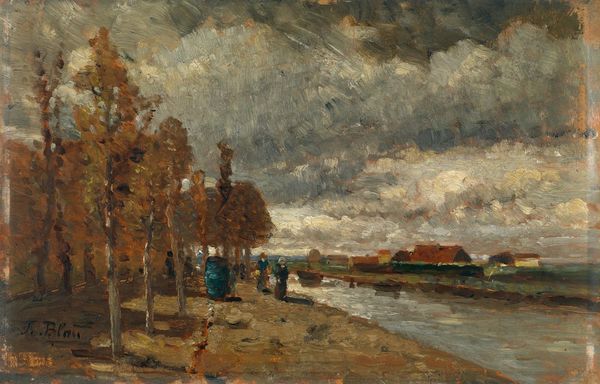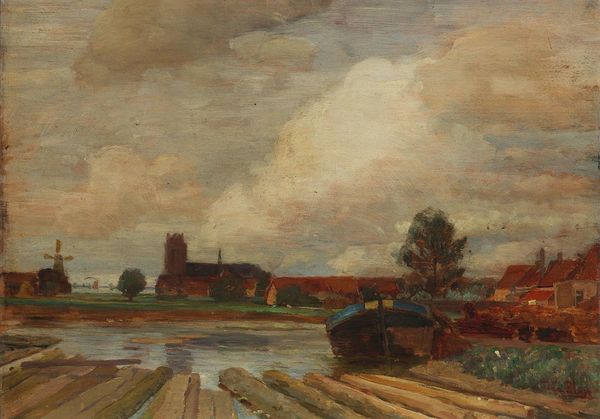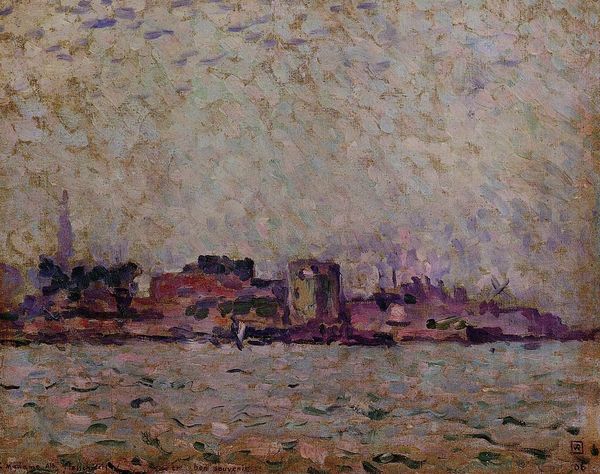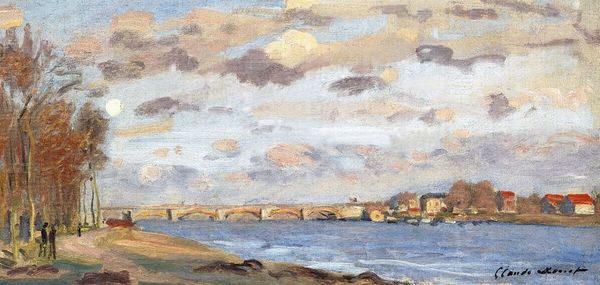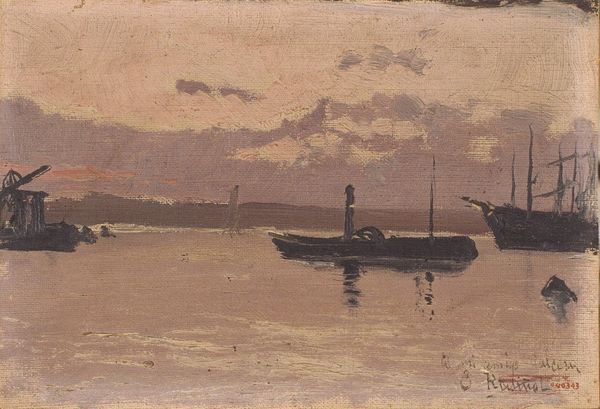
painting, plein-air, oil-paint
#
sky
#
painting
#
impressionism
#
plein-air
#
oil-paint
#
landscape
#
impressionist landscape
#
oil painting
#
ocean
#
seascape
#
cityscape
#
sea
Copyright: Public domain
Curator: Painted in 1876, this is "Port de Javel" by Paul Gauguin, rendered en plein air with oil paints. It captures a view of a port, likely on the Seine near Paris. What are your initial thoughts? Editor: Oh, a moody industrial waterscape! It’s the kind of day where even the clouds seem to be sighing. There's something compelling in how the grays and browns dominate, punctuated by these surprising touches of orange. Curator: Yes, the dominance of gray invites a certain interpretation, reflecting perhaps the transition from rural landscapes to industrialized cityscapes and what that signified to the French identity. Notice the plumes of smoke rising from the chimneys. In many cultures, smoke carries profound symbolism, often related to transformation and communication between earthly and spiritual realms. Here, does the symbolism carry a positive connotation? Editor: I don't know... there's a melancholy lurking. Even with the vibrancy of those orange notes, I keep returning to those smokestacks polluting the sky. Maybe it’s the loss of the rural ideal Gauguin would later chase in Tahiti. There's no joy here, but rather a grim necessity. Curator: An interesting point. Gauguin, like many artists of his time, seems to oscillate between capturing the dynamism of modern life and lamenting what was lost. You mentioned necessity... it brings to mind the concept of "progress" itself being viewed as a double-edged sword in that era, promising prosperity but simultaneously creating conditions of alienation and environmental degradation. Editor: Precisely! It's a portrait of a city in transition, grappling with its identity. And speaking of identity, there's almost a tension between the traditional landscape format and the starkly modern subject matter. This juxtaposition forces us to confront the costs of industrial advancement. Curator: Well said. The interplay between the natural and the artificial invites further examination. Note the brushstrokes too; they seem almost impatient, as if Gauguin was racing to capture a moment that was rapidly disappearing. Editor: And that speed, that urgency – it speaks volumes, doesn’t it? Like he knew that beauty, that open space, would soon be completely transformed. Curator: Perhaps that makes "Port de Javel" not just a landscape, but also a poignant social commentary on progress and the sacrifices made in its name. Editor: A beautiful, bleak reminder, that progress always casts a shadow.
Comments
No comments
Be the first to comment and join the conversation on the ultimate creative platform.
